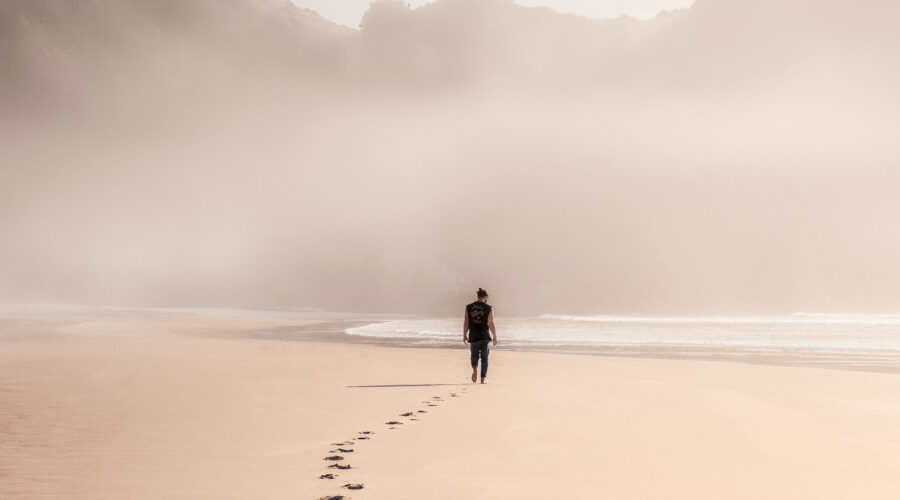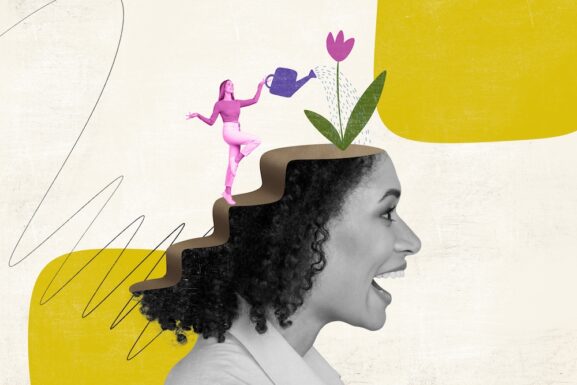What Does ‘Set And Setting’ Mean When Using Psychedelics?
The term “set and setting” is a critical part of the conversation surrounding psychedelics. In a nutshell, it refers to one’s mindset (“set”) and physical and social environment (“setting”) being factors that may influence a psychedelic experience. Set and setting encapsulate many facets.
Indeed, there are so many ways in which one’s mindset and environment can affect what a trip is like.
Whether you are a psychedelic novice or you have many experiences under your belt, it’s still important to be aware of the varied aspects of set and setting. After all, it doesn’t matter how experienced you are — if you don’t pay attention to set and setting, you may be more likely to have a bad trip.
Before exploring these aspects, let’s first take a look at the history of this term, now familiar to psychedelic users all over the world.
RELATED: How Much Do Shrooms Cost, And Can You Buy Them Legally?
An Overview of “Set and Setting”
| Component | Description |
|---|---|
| Set | The mindset, psychological state, and expectations of the individual undergoing therapy. |
| – Mental State | The individual’s current mental and emotional state, including mood, mindset, and outlook. |
| – Expectations | Beliefs, hopes, fears, and preconceived notions about the therapy session and its outcomes. |
| – Intention | The purpose or goal the individual sets for the therapy session, such as healing, insight, or personal growth. |
| Setting | The physical, social, and interpersonal environment in which the therapy session takes place. |
| – Physical Environment | The physical surroundings where the therapy occurs, including factors like lighting, temperature, and comfort. |
| – Safety Measures | Protocols and precautions in place to ensure physical and psychological safety during the session. |
| – Supportive Staff | Trained therapists or facilitators who provide guidance, support, and reassurance during the session. |
| – Emotional Atmosphere | The emotional tone or ambiance of the environment, which can be calming, welcoming, and conducive to introspection. |
| – Privacy | The level of confidentiality and privacy maintained during the session to foster trust and openness. |
The History Of The Concept Of “Set And Setting”
In his book How to Change Your Mind (2018), the author Michael Pollan notes that Al Hubbard, the “Johnny Appleseed of LSD”, observed the concept of set and setting while visiting magic mushroom ceremonies in Mexico.
The term was used as early as 1958 by the Austrian biologist Ludwig von Bertalanffy, and the psychedelic researcher Timothy Leary then popularized it. Soon, researchers studying psychedelic therapy widely accepted the term as a useful way to think about these altered states of consciousness.
The psychoanalyst and psychiatrist Norman Zindberg discussed the concept in his book Drug, Set and Setting: The Basis for Controlled Intoxicant Use (1984). The influential 1964 book The Psychedelic Experience: A Manual Based on the Tibetan Book of the Dead, coauthored by Leary, Ralph Metzner, and Richard Alpert (who changed his name to Ram Dass) also explores set and setting.
Understanding How Set And Setting Impacts Experiences
The authors write the following.
“Of course, the drug dose does not produce the transcendent experience. It merely acts as a chemical key — it opens the mind, frees the nervous system of its ordinary patterns and structures. The nature of the experience depends almost entirely on set and setting. Set denotes the preparation of the individual, including his personality structure and his mood at the time. Setting is physical — the weather, the room’s atmosphere; social — feelings of persons present towards one another; and cultural — prevailing views as to what is real.”
– The Psychedelic Experience: A Manual Based on the Tibetan Book of the Dead
Based on the importance of setting in early psychedelic therapy, Hubbard introduced — as Pollan says — “a treatment space decorated to feel more like a home than a hospital”. This became known as a “Hubbard Room”.
In 1966, Leary carried out a series of experiments with DMT, using a controlled set and setting. He wanted to find out if a supportive set and setting could encourage positive experiences with DMT, which had, at the time, mostly been thought of as a terror-inducing drug. He found that it could.
RELATED: Legal Psychedelics: The U.S. Cities Where Psilocybin, LSD And Others Are Decriminalized
Set And Setting: Your Mindset
The “set” aspect of “set and setting” includes, as Leary notes, your personality and current mood. However, there are many other aspects of your mindset that may change the course of a psychedelic journey.
Personality
There are many different personality traits. Some people display different types more than others, which is part of what makes individuals so unique.
In psychology, there are the Big Five personality traits. Each of the below can influence what a person’s psychedelic experience will be like.
- Extraversion (being outgoing and sociable)
- Agreeableness (warmth and friendliness)
- Openness (being intellectually curious, creative, and imaginative)
- Conscientiousness (being careful and diligent)
- Neuroticism (the tendency to be in a negative or anxious state).
A study published in the Journal of Psychoactive Drugs found correlations between the Big Five personality traits — as well as a person’s proclivity to risky behavior — and subjective responses to psychedelics.
For example, people with high levels of openness were most likely to experience “love, inner visions, and contact with non-ordinary beings and transcendent forces” while under the influence of psychedelics. The authors of the paper hypothesize that the curiosity and open-mindedness of these individuals may cause them to pursue “unusual and intense experiences”.
Meanwhile, highly extroverted people are the least likely to perceive non-ordinary beings. Instead, they tend to experience a deeper sense of connection to other people. The researchers say this likely reflects these individuals’ preference for social interaction over exploring their inner world.
In the study, those with high emotional stability were the least likely to experience fear during a trip. On the flip side, individuals who scored high on the risk-taking measure were more likely to experience ego death or dissolution. This latter finding could be explained by the tendency of these people to pursue extreme psychological experiences.
RELATED: The Stigma Of Psychedelics – Why ‘Illegal’ Doesn’t Always Mean ‘Dangerous’
Mood
The psychiatrist Stan Grof, who has guided or supervised around 4,500 LSD sessions, has described psychedelics as “non-specific amplifiers” of experience. This means they amplify whatever an individual brings to the table, including their current mood.
So, if you’re already in a positive mood, it may enhance this state of mind. Whereas if you take a psychedelic while in an anxious, stressed out, or frustrated frame of mind, the experience has a greater chance of being unpleasant.
This doesn’t mean a negative or positive mood will always lead to a negative or positive experience, respectively, but you should be aware that psychedelics are capable of amplifying whatever mood or emotions you’re currently experiencing.
Mental Health
The relationship between mental health and psychedelics is a complicated one.
For instance, we know that, in a controlled, clinical setting, psychedelic compounds can be used to effectively treat depression, anxiety, and post-traumatic stress disorder (PTSD) — and perhaps other conditions, which future studies will shine a light on.
However, if psychedelics are truly non-specific amplifiers, and negative and anxious states of mind are common to many mental health conditions, can’t tripping make these conditions worse? In some instances, it may.
In studies on using psilocybin therapy for depression, patients with histories of psychotic disorder, a serious suicide attempt, or hospitalization may be excluded. This is based on minimizing the risk of worsening people’s mental health.
Nevertheless, other research has found that psychedelics can reduce suicidality, with further studies corroborating these findings. And, anecdotally, experiencing suicidal ideation, plans, or attempts before a trip may disappear after an experience.
For anyone who experiences these thoughts and desires, using psychedelics outside of a clinical setting may be risky. Even some depressed patients who were part of a clinical trial, conducted by Compass Pathways, experienced suicidal ideation and intentional self-injury after their psilocybin experiences.
Patients with severe or chronic depression may be eligible for these clinical trials. Unfortunately, patients with other conditions are often not considered suitable. Psychedelics may worsen some mental health issues, such as schizophrenia and other psychotic disorders.
Beliefs
Our set also includes the beliefs we hold. These beliefs could be religious, political, philosophical, cultural, or attitudinal in nature. All of these types of beliefs can alter the quality of a psychedelic experience.
For example, religious iconography, which many people perceive in these altered states, can vary depending on the particular religion someone belongs to. Pre-existing beliefs about the nature of reality and consciousness can also lead to a specific interpretation of one’s psychedelic experience.
In his book, Mescaline: A Global History of First Psychedelic (2019), Mike Jay talks about how Westerners and indigenous cultures can have different experiences when it comes to using psychedelics.
When Western scientists, philosophers, and literary figures started experimenting with peyote and mescaline, the visual aspects were emphasized. According to Jay, however, American Indians did not pay much attention to the visions but instead focused on the insights.
Indeed, different cultures can have different views on what psychedelics are and what they do.
Some cultures may believe psychedelic plants and mushrooms contain plant spirits, connecting people to a non-material or spiritual realm. Someone else may see them as effective tools for introspection and improving mental health.
Differing attitudes can drastically alter what manifests — and what feels important — during a trip.
RELATED: What Does An MDMA Hangover Feel Like?
Set And Setting: Your Environment
The other component of set and setting is your physical and social environment. Like your set, your setting has manifold aspects.
Location
Where you have your experience can drastically change its quality, including what kind of mood you’re in. The common environments that people take psychedelics in include at home, in nature, a festival, a concert, or a rave.
Enjoying psychedelics at a party is common by some. However, it’s also possible for these settings to feel over-stimulating, overwhelming, and confusing. The same could apply if you’re in an altered state in a busy city environment.
Many people find that the most positive and deep experiences occur at home. However, other comfortable settings include things in nature — such as a park, the woods, the countryside, or the mountains.
In a natural setting, psychedelics can enhance what is known as nature-relatedness — or how connected one feels to nature. When tripping outdoors, many users feel they are a part of the natural world, rather than separate from it.
Researchers like Sam Gandy believe this feeling is connected to the experience of ego death. This is the feeling when the boundaries between you and the outside world dissolve.
The weather can also impact a psychedelic trip. A sunny day and associated bright colors can make users feel more joyful and upbeat. But if the weather changes to grey and rainy, this might change that person’s mood. This doesn’t always happen, of course. You can have your best psychedelic experience when the weather isn’t great. On the other hand, you may find yourself in a negative state of mind when the sun is shining.
The Social Environment (Or Lack Thereof)
Who you trip with can have a major impact on a psychedelic experience. Ideally, it’s best to have a psychedelic experience with those you trust to look after your well-being. Tripping with strangers, in large crowds, or around people who aren’t trustworthy can all lead to an uncomfortable experience.
On the other hand, many people find when on an ayahuasca retreat, for instance, that sharing their experience with strangers allows them to form deep connections with those people.
Having a psychedelic experience with a sober guide or therapist present can also change the nature of the experience. In a clinical setting, this experience is very much a deeply internal one. However, therapists are present to provide any necessary emotional support.
Many psychedelic users prefer to (or appreciate) having solo trips. That’s because solo trips can allow users to focus on themselves, which can make it easier to go inward.
When you trip with other people, much of the experience can be centered on others and conversation. Each type of setting has its own advantages and disadvantages.
Music
The particular music you listen to can have a profound effect on a psychedelic experience. In clinical trials when using psilocybin for depression treatment, patients will listen to a curated playlist with a blindfold on. This music matches the stages of a psilocybin trip, aiming to help participants have a deep journey.
The Imperial College London and Johns Hopkins University suggest these playlists for psychedelic therapy.
These playlists include a lot of Western classical music.
However, research from ACS Pharmacology and Translational Science compared the effects of listening to overtone-based music to Western classical music while under the influence of psilocybin. The researchers discovered that it was slightly more beneficial to listen to the former.
The overtone-based playlist (which you can find here on Spotify) emphasized instruments that had strong overtone signatures, such as chimes, bells, and gongs. This music is also distinct rhythmically and melodically.
The Western classical playlist (which you can find here) is made up of classical music resembling playlists used by previous psychedelic researchers. The authors reveal there was a trend of greater mystical experiences for sessions involving overtone-based music.
RELATED: The Collective Unconscious And Psychedelics – How They Relate
Disclaimer: We do not endorse the illicit use of Schedule 1 psychedelic compounds in a non-therapeutic setting. We do, however, hope the regulations look at the research to understand how these drugs can used in powerfully positive ways.



